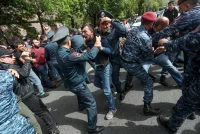New Opportunities for Mediation in Nagorno-Karabakh
In the shadow of Russia’s war in Ukraine, a series of clashes and a subsequent period of quiet have raised both fears about renewed fighting in Nagorno-Karabakh and hopes that diplomacy might still bring the parties closer to peace. In March, Azerbaijani forces seized territory around Farukh, an ethnic Armenian-populated village that has been patrolled by Russian peacekeepers since a ceasefire ended the 2020 war that upended an almost three-decade status quo in the region. The Armenian government, along with Nagorno-Karabakh’s de facto authorities, worried that the move might herald a broader Azerbaijani offensive, taking advantage of Moscow’s focus on Ukraine.… Seguir leyendo »
















